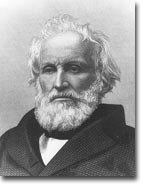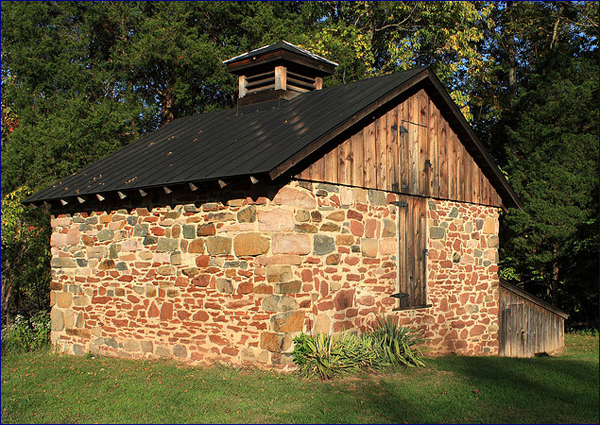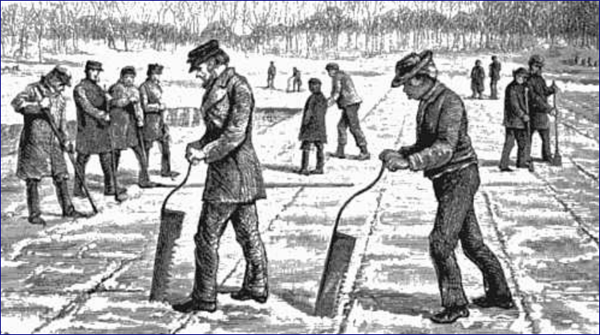Ice King
by Andrew Boyd
Today, ice heads south. The University of Houston's College of Engineering presents this series about the machines that make our civilization run, and the people whose ingenuity created them.
Ingenuity and tenacity are both critical ingredients for bringing about change. But the proportions aren't fixed. And in the case of the man known as the Ice King, the mix was one part ingenuity, ten parts tenacity.

Frederic Tudor was born New England in the decade that followed the American Revolution. His family was well regarded in society and, like many well-to-do families, maintained an insulated building where winter ice was kept for use in the summer. Once at a party, Tudor's father quipped that there might be a market for ice in places that never froze. The idea was likely born of the evenings libations, and no one took it seriously — except Tudor.

The engineering problems were clear. Ice had to be harvested where and when water was frozen and transported by ship to where it was warm. For insulation, Tudor experimented with hay, charcoal, and other materials before eventually settling on sawdust. It was cheap and turned out to work quite well.
On other fronts, Tudor wasn't so successful. Described as 'self-centered, dynamic, [and] high-strung,' he suffered from the malady of 'ready, fire, aim.' One of Tudor's cousins once chided, 'Will you learn to lay the foundations before raising the roof?'
On his first ice run to the Caribbean, Tudor showed up on the island of Martinique expecting a hero's welcome. Instead, he was met with skepticism. Here was a problem Tudor hadn't foreseen: people had been getting along just fine without ice. Some even complained the cold made their teeth hurt.
But that didn't stop Tudor. He decided people in warm regions really did want ice, they just didn't know it. So he gave it away, assuming people would develop a taste for it. As a result of his efforts, ice gained a following, but not immediately. For years Tudor lived on the edge of bankruptcy, spending time in and out of jail for failure to pay his bills. But he was convinced the road to riches was paved with ice. And displaying a tenacity few could match, he overcame challenge after challenge. After decades of effort, Tudor built a highly profitable business and made himself a fortune, shipping ice to countries as far away as India.
Today, Tudor is remembered for his entrepreneurial spirit. He created a market where no market existed. Alistair Cooke went so far as to call Tudor 'the brilliant forerunner of the American businessman and advertiser at their most characteristic.'
Tudor's tenacity carried him to great heights, but had he lived longer, his failure to recognize ingenuity may have been his downfall. In the words of one biographer, Tudor considered the idea of mechanically produced ice to be 'complete nonsense.' In doing so, he refused to see the big change on the horizon: refrigeration.

I'm Andy Boyd at the University of Houston, where we're interested in the way inventive minds work.
(Theme music)
Notes and references:
E. Felton. 'The Ice King was a Tudor.' The Wall Street Journal, July 29, 2006. See also: http://online.wsj.com/article/SB115411425751320642.html. Accessed September 6, 2011.
Frederic Tudor: Ice King. From the Proceedings of the Massachusetts Historical Society, November, 1933. Posted by Stephen Round on the Web site: http://www.iceharvestingusa.com/Frederic%20Tudor%20Ice%20King.html. Accessed September 6, 2011.
J. Palca. Ice Trade. An interview with Gavin Weightman, author of The Frozen Water Trade. Hyperion, 2004. From the NPR Web site: https://www.npr.org/templates/story/story.php?storyId=1307429. Accessd September 6, 2011.
The picture of the circa 1880 ice house is by Mark Benton and taken from the Flickr Website: https://www.flickr.com/photos/27302612@N03/2945375158/. All other pictures are in the public domain as a result of expired copyrights.
This episode was first aired on September 8th, 2011